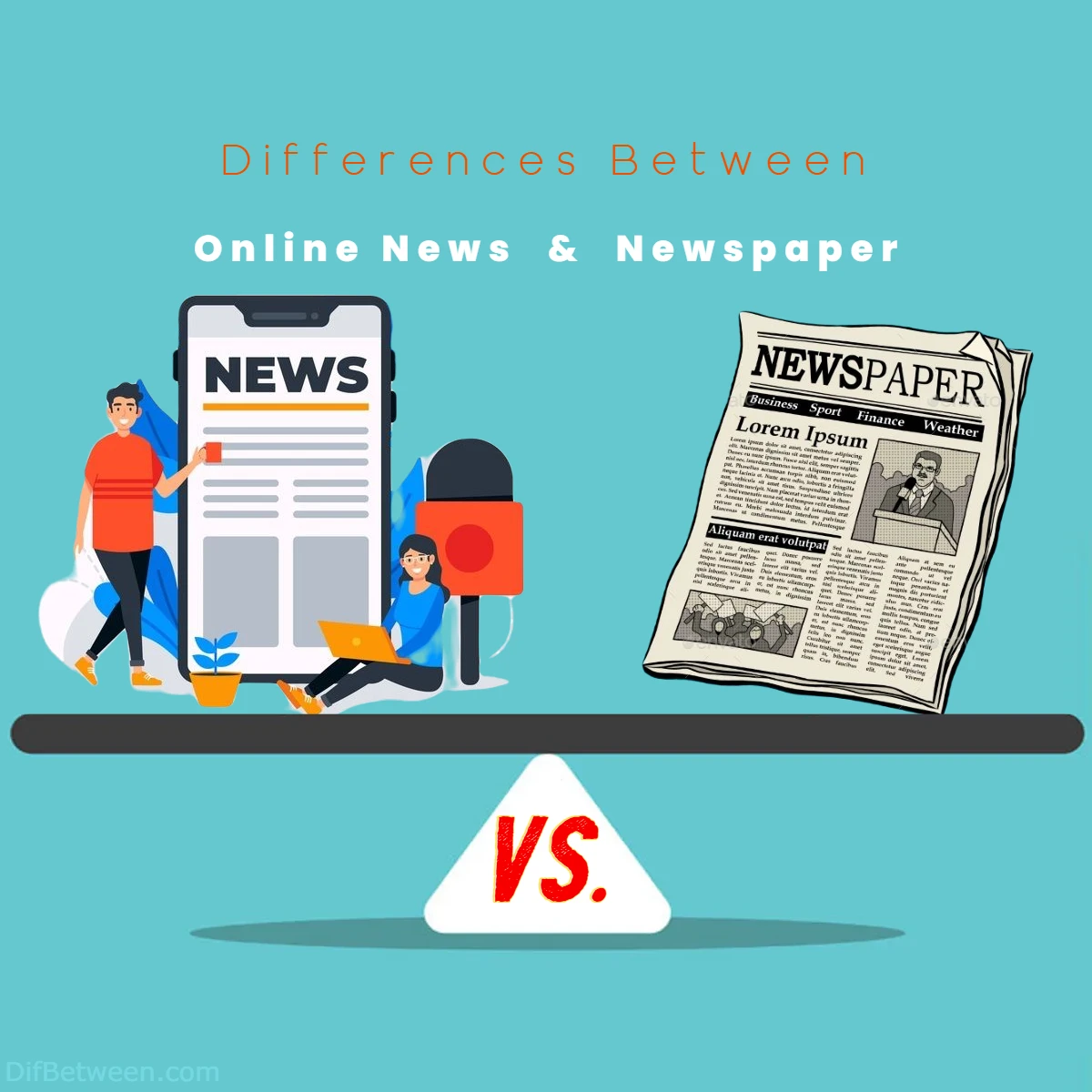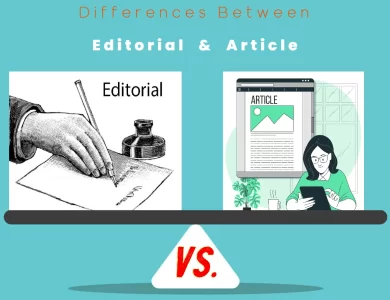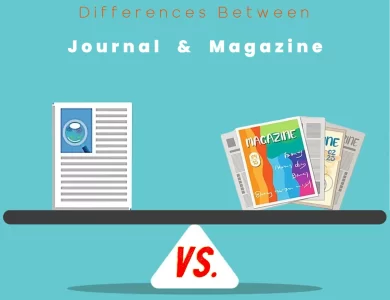
| Aspect | Online News | Newspaper |
|---|---|---|
| Accessibility and Convenience | Instant access 24/7 via devices like smartphones, tablets, and PCs. | Physical copies available, requiring no internet connection. |
| Depth of Coverage | Concise articles with quick updates on various topics. | In-depth analysis, features, and investigative pieces available. |
| Interactivity and Engagement | Immediate discussions, sharing, and engagement through comments. | Limited interactivity, fostering focused reading and discussion. |
| Credibility and Source Evaluation | Varies widely; requires careful source verification. | Established reputation for credible reporting and accountability. |
| Cost and Accessibility | Often free, with possible premium content behind paywalls. | Requires subscription or purchase; offers curated news package. |
| Personalization and Customization | Tailored content based on preferences and browsing history. | Offers a curated selection of articles chosen by professional editors. |
| Archival and Longevity | Easily archived and accessible through online search. | Physically collectible and can be preserved for historical records. |
| Distraction and Focus | Potential for distractions, notifications, and ads. | Provides focused reading experience without digital distractions. |
| Mobility and Portability | Portable and accessible on devices, perfect for on-the-go. | Not dependent on internet access; ideal for remote locations. |
| Visual Design and Aesthetics | Incorporates multimedia elements like videos and infographics. | Follows a traditional layout with structured columns and sections. |
| Social Sharing and Virality | Articles can quickly go viral through social media sharing. | Sharing involves physical passing or discussion, less immediate. |
| Environmental Impact | Generally lower carbon footprint due to reduced paper usage. | Printing and distribution contribute to environmental impact. |
In this digital age, where screens illuminate our lives, online news platforms beckon with a symphony of instant updates and fingertip access. Picture this: a world where breaking news dances across your smartphone screen, where articles unfold with interactive graphics, and where global discussions flourish in the comment sections. But don’t be too hasty – traditional newspapers have an ageless allure that’s hard to resist. Imagine the tactile pleasure of flipping through pages, absorbing in-depth analysis on crisp paper, and cherishing the newspaper’s hallowed presence during quiet mornings.
Differences Between Online News and Newspaper
The main differences between online news and newspapers lie in accessibility and format. Online news offers instant access via digital devices like smartphones and tablets, ensuring real-time updates and multimedia engagement. In contrast, newspapers provide a tangible reading experience, allowing in-depth exploration through curated content, albeit with limitations in timeliness. While online news boasts interactivity and personalized feeds, newspapers offer a traditional, focused reading environment, appealing to those seeking credibility and tactile pleasure.
1. Accessibility and Convenience
Online News: One of the most notable advantages of online news is its unparalleled accessibility. With just a few clicks or taps, you can access a vast array of news articles, reports, and multimedia content from around the globe. Whether you’re using a computer, smartphone, or tablet, the internet brings the latest updates to your fingertips, 24/7. You’re not bound by geographic constraints, making it an excellent choice for the digitally connected generation.
However, this convenience comes with a caveat. The sheer volume of information available online can be overwhelming, and not all sources are credible. It’s essential to verify the authenticity of the news and rely on reputable websites to avoid falling victim to misinformation or fake news.
Newspaper: Newspapers, on the other hand, offer a tangible and tactile reading experience. There’s a sense of ritual in flipping through the pages over a morning cup of coffee. Newspapers provide a curated selection of top stories, helping readers focus amidst the deluge of information. Plus, they don’t require an internet connection or a device, ensuring that you can read them anywhere, anytime.
While newspapers offer a certain level of convenience, they come with limitations in terms of timeliness. Printed newspapers are updated on a daily or, in some cases, a weekly basis. This means that breaking news might not be as promptly accessible in this format.
2. Depth of Coverage
Online News: The digital landscape allows online news platforms to cover a broad spectrum of topics in real-time. From politics and economics to entertainment and science, you can find in-depth articles catering to various interests. Online articles can also incorporate multimedia elements such as videos, infographics, and interactive graphics, enhancing the reader’s understanding of complex subjects.
However, the race for immediacy can sometimes compromise the depth of analysis. Online news articles tend to be concise and focused on providing essential information quickly. While this is ideal for keeping up with the latest developments, it might not always satisfy readers seeking an in-depth exploration of a topic.
Newspaper: Newspapers have more space to dive into detailed stories. Journalists have the opportunity to provide comprehensive analysis, background information, and varying perspectives on a particular issue. This depth of coverage is especially evident in features, opinion pieces, and investigative journalism. If you’re someone who craves context and a nuanced understanding of current events, newspapers can be a rewarding choice.
However, the space constraints of a printed page can also be a limitation. Lengthy articles might span multiple pages, requiring readers to flip back and forth, which can be cumbersome.
3. Interactivity and Engagement
Online News: Interactivity is a hallmark of online news platforms. Readers can engage with content in various ways: leaving comments, sharing articles on social media, participating in polls, and even accessing related content through hyperlinks. This fosters a sense of community and allows for immediate discussion and feedback on news stories.
Additionally, online news can harness the power of multimedia to create a more immersive experience. Videos, images, and interactive elements can convey information more dynamically than text alone.
Newspaper: While newspapers lack the real-time interactivity of online platforms, they offer a different kind of engagement. Readers can physically clip articles, make annotations, and share the paper with others. The tactile nature of newspapers can lead to a more focused reading experience, as you’re less likely to be distracted by notifications or links.
4. Credibility and Source Evaluation
Online News: The digital age has democratized news publishing, allowing anyone to share information online. While this has expanded the range of voices, it has also given rise to the challenge of discerning credible sources from unreliable ones. Fact-checking and source verification are crucial when navigating online news platforms. Reputable websites maintain editorial standards, but misinformation can still spread rapidly through social media and other channels.
Newspaper: Established newspapers have a history of credibility and accountability. They typically adhere to rigorous editorial processes and employ professional journalists who follow ethical guidelines. Readers often have a level of trust in well-known newspapers due to their longstanding reputation for accurate reporting.
5. Environmental Impact
Online News: From an environmental standpoint, online news has a relatively lower carbon footprint. The distribution of digital content eliminates the need for paper production, printing, and transportation. However, the energy consumption associated with data centers and electronic devices must also be considered.
Newspaper: Traditional newspapers contribute to deforestation and energy consumption related to printing and distribution. However, the newspaper industry has been making efforts to adopt sustainable practices, such as using recycled paper and eco-friendly inks.
6. Cost and Accessibility
Online News: Many online news sources offer their content for free, making them incredibly accessible to a global audience. This is particularly beneficial for individuals who want to stay informed without the financial commitment of purchasing newspapers. However, some online news outlets might implement paywalls for premium content or in-depth analysis. This could limit access to certain articles, prompting readers to subscribe for full access.
Newspaper: Newspapers typically require a subscription or a per-issue purchase. While this can add up over time, it also ensures a consistent and curated source of information. Subscribers often receive additional benefits such as weekend editions, magazine inserts, and access to digital content. For readers who enjoy a dedicated news source and are willing to invest, newspapers offer a comprehensive package.
7. Personalization and Customization
Online News: Online platforms often employ algorithms that tailor content to individual readers based on their browsing history, preferences, and location. This means you’re more likely to see articles aligned with your interests, creating a personalized news experience. However, this can also lead to information bubbles, where you’re only exposed to viewpoints that align with your existing beliefs.
Newspaper: Newspapers provide a curated selection of articles chosen by professional editors. While this eliminates some personalization, it ensures a well-rounded view of current events. Readers might encounter stories they wouldn’t have chosen themselves, leading to a broader understanding of diverse topics.
8. Archival and Longevity
Online News: Online news articles can be easily archived and accessed through search engines or news websites. This means that even after the initial publication, you can revisit articles, share them, and refer back to them whenever needed. However, the vast amount of content available online can sometimes make finding specific articles challenging, especially as they might get buried under newer stories.
Newspaper: Physical newspapers can be collected and stored as a record of historical events. They offer a tangible snapshot of a specific day’s news. While this might lack the searchability of digital archives, it’s a tangible way to preserve significant moments in time.
9. Distraction and Focus
Online News: The online environment comes with a plethora of distractions. While reading an online news article, you might receive notifications, encounter ads, or be tempted to explore unrelated content. This can make it challenging to maintain focus on the news story itself.
Newspaper: Newspapers offer a focused reading experience. Without the allure of hyperlinks and notifications, you’re more likely to read articles from start to finish without interruption.
10. Mobility and Portability
Online News: With smartphones and tablets, online news is incredibly portable. You can catch up on the latest headlines during your commute, while waiting in line, or even while lounging at home. The convenience of carrying a world of information in your pocket is a significant advantage of online news.
Newspaper: While newspapers are bulkier, they have a distinct advantage when it comes to reading in locations without internet access. Whether you’re on a remote camping trip or in an area with poor connectivity, a newspaper doesn’t rely on a Wi-Fi signal.
11. Visual Design and Aesthetics
Online News: Online news platforms often experiment with visual design, incorporating multimedia elements and interactive graphics. This dynamic presentation can enhance the overall storytelling experience and help readers grasp complex topics more easily.
Newspaper: The layout of a newspaper follows a traditional format, with articles organized into columns and sections. While this might lack the visual flair of online platforms, it has a certain nostalgic charm and a structured reading flow.
12. Social Sharing and Virality
Online News: The digital realm thrives on social sharing. Online news articles can quickly go viral, reaching a global audience within hours. Social media platforms provide a direct avenue for readers to share articles, express their opinions, and engage in discussions.
Newspaper: While newspapers can be shared physically, the process is less instantaneous. Sharing involves physically passing on the paper or discussing the news with others. This can lead to more deliberate and thoughtful conversations.
Online News or Newspaper: Which One is Right Choose for You?
In a world brimming with information, choosing between online news and traditional newspapers can be a delightful dilemma. Each option offers a distinct experience, catering to different preferences and lifestyles. Let’s embark on a journey to discover which one might be the right choice for you.
Digital Delight: The Online News Experience
Why You Might Love Online News:
- Instant Gratification: In a world that thrives on speed, online news platforms are your ticket to real-time updates. From breaking news to the latest trends, you’ll be the first to know.
- Anywhere, Anytime: Carrying the world’s news in your pocket is no longer a fantasy. Online news is accessible on your smartphone, tablet, or computer, empowering you to stay informed on the go.
- Multimedia Magic: Videos, interactive graphics, and immersive visuals bring stories to life. If you’re a visual learner who craves dynamic content, online news has you covered.
- Engagement Galore: Join the conversation! Online news invites you to share, comment, and engage with other readers. Your voice matters, and it’s just a click away.
- Personalization Power: Algorithms tailor news to your interests, creating a unique news feed that caters to what matters most to you. Get news that resonates.
Points to Consider:
- Verification Vigilance: Not all online sources are created equal. Practice discernment and fact-checking to navigate the sea of information responsibly.
- Digital Detox: Constant connectivity can be overwhelming. Set boundaries to avoid information overload and maintain a healthy digital-life balance.
Nostalgic Charm: The Newspaper Affair
Why You Might Love Newspapers:
- Tactile Pleasure: There’s something enchanting about the rustling of pages and the scent of fresh ink. If you appreciate the tactile joy of reading, newspapers deliver.
- Focused Reading: In a world of distractions, newspapers offer a focused reading experience. No pop-up ads or notifications—just you and the news.
- In-depth Exploration: If you crave context and in-depth analysis, newspapers are your companion. Features, opinions, and investigative pieces take you beyond the headlines.
- Trusted Tradition: Established newspapers carry a legacy of credibility. You can trust the thorough research and ethical standards upheld by professional journalists.
- Offline Oasis: No Wi-Fi? No problem. Newspapers don’t rely on connectivity, making them perfect companions for remote getaways or internet downtime.
Points to Consider:
- Timeliness Trade-off: Breaking news might be a step behind, as newspapers are printed daily or weekly. If up-to-the-minute updates are essential, this might not be your top choice.
- Space Struggle: Lengthy articles might span multiple pages, requiring a bit of page-flipping. Embrace the charm or consider digital alternatives for long reads.
The Verdict: Your News, Your Way
The choice between online news and newspapers boils down to your lifestyle, preferences, and information needs. If you thrive on immediacy, interactivity, and multimedia engagement, online news is your digital playground. On the other hand, if you relish in-depth analysis, tactile reading, and the trusted aura of tradition, newspapers are your classic confidant.
FAQs
The key differences revolve around accessibility, format, and engagement. Online news offers instant access via digital devices, delivering real-time updates and multimedia content, while newspapers provide a tangible reading experience with curated, in-depth articles.
Online news platforms grant immediate access through devices like smartphones and tablets, allowing readers to stay informed on the go. Newspapers, on the other hand, offer physical copies that don’t require an internet connection.
Online news platforms encourage interactivity through features like comments, sharing, and engaging multimedia. This fosters discussions and allows readers to participate in real-time conversations.
Established newspapers have a history of credibility due to their professional journalism standards. Online news, while offering a diverse range of sources, requires careful verification of information.
Online news platforms often personalize content based on user preferences and browsing history. Newspapers, however, offer a curated selection of articles chosen by editors.
Online news may come with distractions such as notifications, ads, and unrelated content, which can hinder focused reading.
Yes, newspapers often provide in-depth analysis, features, and investigative pieces that delve deeper into various subjects, catering to readers seeking comprehensive understanding.
Online news is generally considered more eco-friendly due to reduced paper usage. However, both mediums have their environmental implications.
Online news content can be easily archived and accessed through online searches, while newspapers offer a physical record that can be preserved for historical purposes.
Newspapers provide a focused and tactile reading experience, devoid of digital distractions, making them suitable for immersive reading. Online news offers a dynamic, multimedia-rich encounter.
Read More:
Contents
- Differences Between Online News and Newspaper
- 1. Accessibility and Convenience
- 2. Depth of Coverage
- 3. Interactivity and Engagement
- 4. Credibility and Source Evaluation
- 5. Environmental Impact
- 6. Cost and Accessibility
- 7. Personalization and Customization
- 8. Archival and Longevity
- 9. Distraction and Focus
- 10. Mobility and Portability
- 11. Visual Design and Aesthetics
- 12. Social Sharing and Virality
- Online News or Newspaper: Which One is Right Choose for You?
- FAQs






